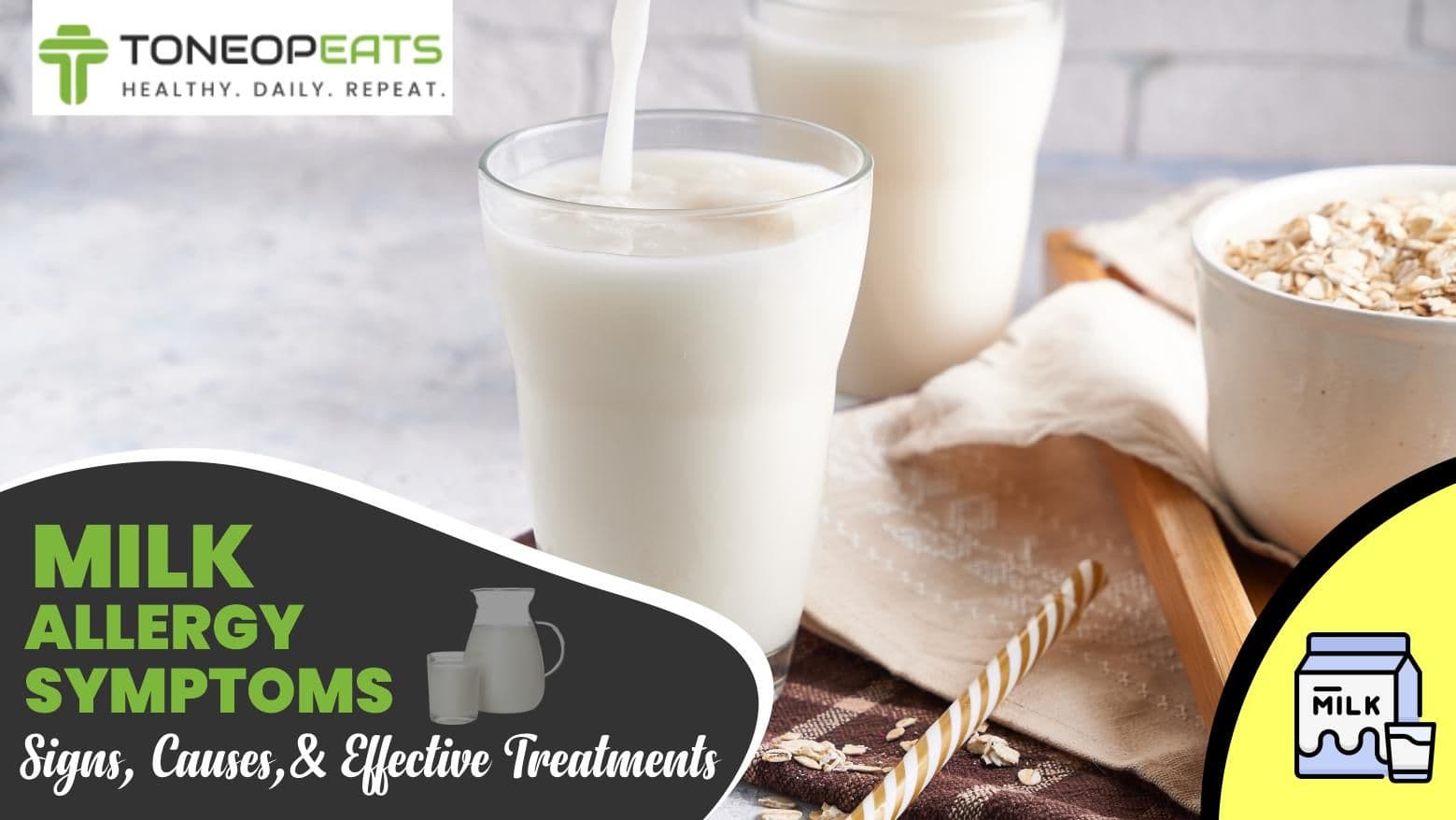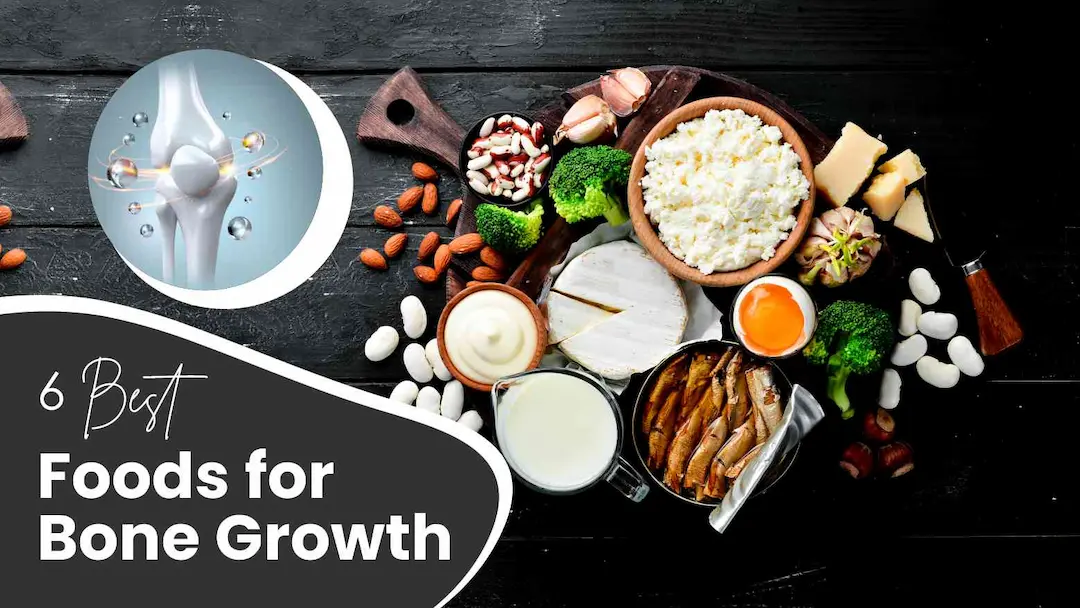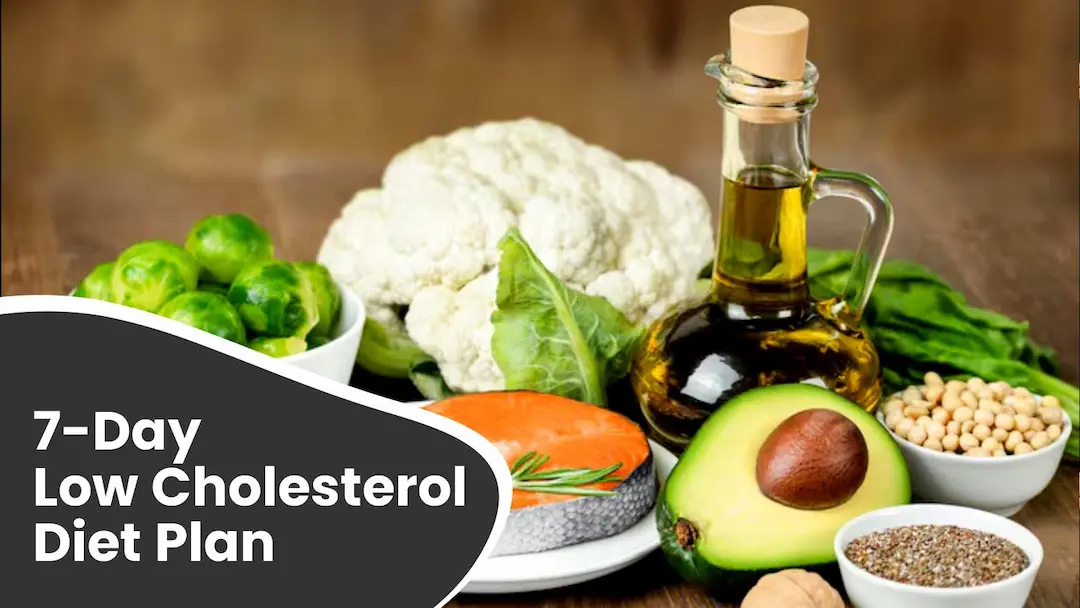We have all been asked to have a glass of milk daily, especially as children. But do you know that milk allergy is most common in young children but can affect people of all ages? Milk is one of the most common food allergens, with an estimated 1 in 5 children having a food allergy. In particular, one in three children with milk allergy has a severe reaction.
After consuming milk or dairy products, people with a milk allergy may experience acute reactions, including hives, skin rashes, gastrointestinal difficulties like vomiting and diarrhoea, and respiratory concerns like asthma or trouble breathing. People and caregivers must identify and address symptoms as soon as possible. Let us dive into this blog to learn about milk allergy in detail, its signs and symptoms, how to identify if you are allergic to milk and dairy allergy treatment options.
Table Of Contents
1. What Is Milk Allergy?
2. How Do I Know If I Am Allergic To Milk Products?
3. Milk Allergy And Lactose Intolerance Signs And Symptoms
4. What Are The Causes Of Cow Milk Allergy?
5. Dairy Intolerance Treatment
6. Dietitian's Recommendation
7. The Final Say
8. FAQs
9. References
What Is Milk Allergy?
Milk allergy is an abnormal overreaction to milk proteins caused by a body's immune system malfunction. An immunological reaction to one of the several proteins in cow milk is known as a milk allergy. It is most commonly caused by the S1 alpha-casein protein in cow's milk.
Milk proteins are usually harmless, but with milk allergy, the immune system reacts to them as if they were a disease that must be treated. The Food and Agriculture Organisation of the United Nations (FAO) estimates that 2 to 6 per cent of the world's population suffers from milk protein allergy. Although milk allergy occurs in the first year of a child's life, most children outgrow it by age 5.
One of the eight foods responsible for 90% of childhood allergies, milk is the most common cause of allergic responses in kids. However, milk from sheep, goats, buffalo, and other mammals can also cause reactions. Allergic reactions usually occur shortly after you or your child consumes the milk. Most children develop milk allergies over time, but milk allergy is also one of the most common food allergies in adults.
Due to their similar symptoms, lactose intolerance and milk allergy are frequently misunderstood. However, there are significant differences between the two conditions. When the intestinal enzyme lactase, which breaks down lactose (milk sugar), is absent, lactose intolerance develops. If you are allergic to milk, you should avoid milk, yoghurt, cheese, butter, and other dairy products containing milk proteins. For many people, vegan meal planning is more suitable to avoid milk allergy symptoms as well as lactose intolerance.
How Do I Know If I Am Allergic To Milk Products?
To determine if you are allergic to milk products, watch for signs and symptoms that appear shortly after consuming milk or dairy. Common symptoms of a milk allergy include hives, wheezing, vomiting, abdominal pain, and swelling of the lips or throat.
Milk allergy can occur in anyone, regardless of age. However, it occurs most often in children under 16 years of age. Many children with milk allergies outgrow this allergy as they grow up. Almost all children with milk protein intolerance outgrow this symptom. Milk allergy causes an allergic reaction in the body. The body's reaction to an allergen is known as an allergic reaction.
If you have a milk allergy, your body reacts by producing immunoglobulin E (IgE) after your first exposure to milk. IgE is an antibody produced by your immune system. Your body produces different types of IgE that target specific types of allergens. The mast cells (allergic cells) in your skin, airways, and cardiovascular system are bound by IgE antibodies. They produce histamine when they come into contact with milk proteins. The cause of allergic symptoms is histamine. Reactions can include anaphylaxis, a severe allergic reaction that can lead to death.
Other reactions to milk are not the result of allergy antibodies. Reactions to milk are slower than IgE-mediated reactions. It can take up to 48 hours to develop. Milk is one of the most common causes of non-IgE reactions in infants. Most non-IgE food allergies, including milk, are not life-threatening. Reactions can include milk protein intolerance.
Also Read: 10 Tofu Health Benefits That Are Straight Fire! Get the Verdict on Paneer vs Tofu Battle!
Milk Allergy And Lactose Intolerance Signs And Symptoms

In this section, we have provided the combined symptoms of milk allergy and lactose intolerance. While some symptoms are common, some are not, which has been specified below. So, take note of these lactose intolerance and milk allergy symptoms:
- Hives
- Nausea or vomiting
- Abdominal pain
- Diarrhea
- Rash
- Itching
- Tingling or swelling of the lips, tongue, or throat
- Dizziness
- Chest tightness
- Shortness of breath (dyspnea)
- Difficulty breathing
- Difficulty swallowing (dysphagia)
- Rash (contact dermatitis)
- Low blood pressure (hypotension)
- Loss of consciousness
Note:
- Symptoms Not Present in Milk Allergy: Bloating and gas. These symptoms are specific to lactose intolerance and do not occur in milk allergy.
- Symptoms Not Present in Lactose Intolerance: Hives, swelling of lips, tongue, or throat, difficulty breathing or swallowing, low blood pressure. These symptoms are specific to milk allergy and do not occur in lactose intolerance.
Although rare, people with milk allergies can experience a severe reaction known as anaphylaxis. Anaphylaxis is an uncommon but possibly fatal event that can induce breathing difficulties and shock. Anaphylactic shock can cause swelling of the throat and mouth, low blood pressure, and difficulty breathing. It can also lead to cardiac arrest. Anaphylaxis requires immediate treatment and is treated with epinephrine in the form of an injection (EpiPen).
What Are The Causes Of Cow Milk Allergy?
Adverse reactions of your immune system cause all types of food allergies. Allergy symptoms appear when your immune system is triggered to release immunoglobulin E (IgE) antibodies in response to specific proteins in ingested milk that are considered a foreign body or allergen. The next time you drink milk, these proteins are recognised by antibodies, which trigger your immune system to produce histamine and other chemicals that manifest as allergy symptoms.
The two main parts of cow's milk that can cause allergies are:
- Casein: It makes up 80% of cow's milk and gives it its pristine white colour. It is the solid part of the milk that separates when it is curdled or spoiled.
- Whey: Whey protein is the remaining liquid part of milk, also called a byproduct of cheese making. It makes up 20% of the protein in milk.
You may be allergic to one or both proteins, and it is difficult to avoid them as most processed products may contain one or both.
Some other factors or conditions that increase the risk of milk allergy are:
- Sensitivity: Some children with milk intolerance are also prone to other allergies. Their immune system is sensitive and may react to different products related to animal protein.
- Atopic dermatitis is a joint chronic skin inflammation characterised by red and itchy bumps. Children with sensitive skin are more likely to be allergic to milk.
- Genetic predisposition: If one or both parents suffer from food allergies, the child's risk of food allergies increases many times. Even if a child suffers from other allergies, such as asthma or hay fever, he may be sensitive enough to food allergies.
- Age: Children may be more sensitive to milk or milk products. Their digestive systems and enzymes mature as they grow, making them less susceptible to milk or food allergies.
ToneOp Fit’s Balanced Diet Weight Loss Plan can help you get balanced nutrition guidance from an expert coach who can help you replace your dietary requirement of milk and dairy with an equally rich calcium and protein option that may be suitable for you.
Dairy Intolerance Treatment
If you have a dairy or milk allergy, the only way to avoid a reaction is to avoid milk and milk-containing items. The U.S. Food and Drug Administration (FDA) requires all food manufacturers to provide a list of common food allergens on their labels.
Read food labels carefully. Look for casein, a milk derivative found in some unexpected foods, such as canned tuna, sausages, or non-dairy products. When ordering in restaurants, ask about the ingredients.
It's also crucial to remember that some non-dairy items could be produced in the same plant as dairy products. Look for labels that say “manufactured in a facility that processes milk” or “produced on the same equipment that processes milk.” Many children outgrow their milk allergy, so treatment for this specific food allergen is often unnecessary. If your child doesn’t seem to be improving from his or her allergy, ask your allergist about food desensitisation techniques such as oral immunotherapy (OIT).
For calcium supplementation, try ToneOp Care’s Bone 360 tablets, and for vegan protein supplementation, try Alfalfa Powder.
Dietitian's Recommendation
If you get indigestion after consuming dairy products, try monitoring your diet and observing how your body responds to the foods you eat. You can also temporarily eliminate dairy products—such as milk, cheese, and yoghurt—from your diet and see if your symptoms improve. Report the results to your doctor, and you can have testing done to confirm the diagnosis and find the appropriate treatment.
Dt. Lavina Chauhan
The Final Say
A milk allergy is a kind of food allergy that happens when the proteins in milk cause your immune system to mount a defence reaction unintentionally. This reaction – or an allergic reaction – can cause various symptoms, including hives, itching, nausea, vomiting, diarrhoea and, in severe cases, anaphylaxis.
Not knowing what's causing your symptoms can be frustrating, but a healthcare provider can help. They can perform tests to confirm a milk allergy and prescribe medication. They can also refer you to a dietitian who can help you figure out what's best for you to eat and drink.
FAQs
1. Can milk allergy be cured?
Currently, there is no cure for milk allergy. The best approach is to avoid all milk products and be prepared for allergic reactions. Read food labels carefully. Look for casein, a milk derivative that can be found in some unexpected foods.
2. Can you suddenly develop a dairy allergy?
Yes, it is possible to suddenly develop a dairy allergy at any age, even if you have consumed dairy without issues before.
3. Can milk allergy cause shortness of breath?
Yes, milk allergy can cause shortness of breath as part of a severe allergic reaction, which may include other symptoms like wheezing and difficulty breathing.
References
- https://www.arla.com/articles/what-is-milk-allergy-info/
- https://www.foodallergy.org/living-food-allergies/food-allergy-essentials/common-allergens/milk
- https://www.healthline.com/health/allergies/milk#in-children
- https://www.careinsurance.com/blog/health-insurance-articles/milk-allergies-types-symptoms-and-treatment
- https://acaai.org/allergies/allergic-conditions/food/milk-dairy/
- https://my.clevelandclinic.org/health/diseases/11315-milk-allergy
- https://www.mayoclinic.org/diseases-conditions/milk-allergy/symptoms-causes/syc-20375101#prevention
- https://allergyasthmanetwork.org/food-allergies/milk-allergy/#:~:text=But%20adults%20can%20develop%20a,whey%20%E2%80%93%20as%20a%20harmful%20invader.
About ToneOp Eats
ToneOp Eats is your go-to health kitchen, delivering nourishing meals in Bhopal, Indore & Bangalore. The meals are prepared with strategically planned nutrition and portions for your health goal. With just three simple steps, you can subscribe to a meal plan for weight loss, muscle gain, or balanced diet goals. Experience the perfect blend of taste and wellness in our nutrient-dense and calorie-counted range of meals, including protein-rich grills and meal bowls, full of fibre salads & smoothies, workout-friendly protein 30,40,50 meals and refreshing juices.



































